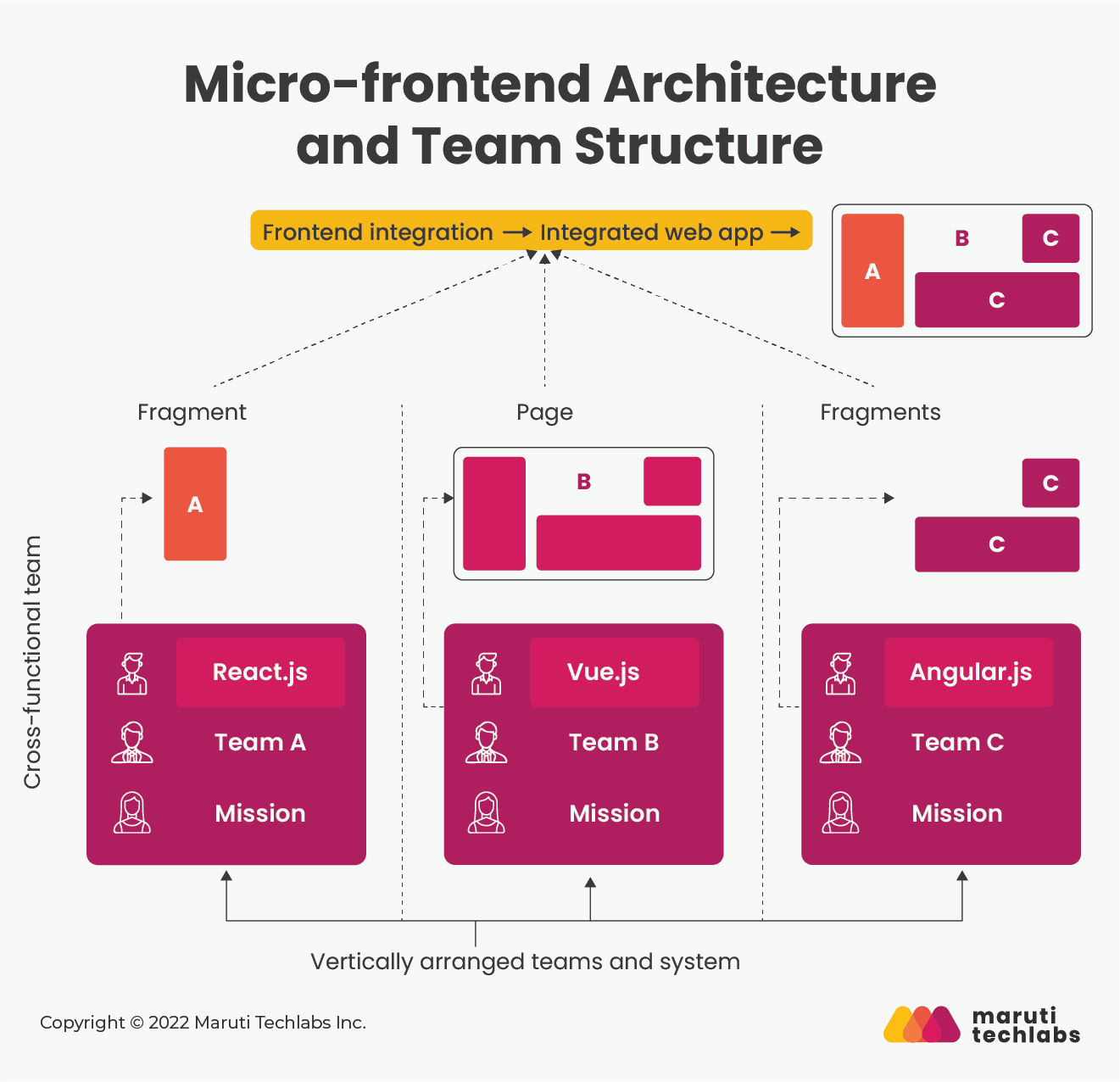Micro Frontend Architecture
As web applications grow larger and more complex, managing a monolithic frontend architecture can become challenging. Enter micro frontends — a modern architectural approach that allows teams to build and deploy frontend applications in smaller, independent pieces. In this blog, we'll dive deep into what micro frontends are, how they work, and why they are becoming increasingly popular.
What are Micro Frontends?
Micro frontends extend the principles of microservices to the frontend. Rather than developing a single, monolithic application, the frontend is split into smaller, self-contained units that can be developed, tested, and deployed independently. Each micro frontend focuses on a specific feature or module of the application, ensuring modularity and scalability.
For example, in an e-commerce platform, the product catalog, user reviews, and shopping cart could each be separate micro frontends, enabling teams to work on them independently without interfering with each other.
Key Features of Micro Frontends
- Independent Development: Each micro frontend can be built and maintained by a dedicated team without dependencies on other teams.
- Technology Agnostic: Different micro frontends can use different frameworks (e.g., React for one module and Vue for another) as long as they integrate seamlessly.
- Independent Deployment: Updates to one micro frontend can be deployed independently of others, reducing the risk of breaking the entire application.
- Scalability: By breaking the frontend into smaller pieces, development can scale horizontally across multiple teams.
Micro Frontend Architecture
Micro frontends are typically built using one of the following architectural patterns:
1. Client-Side Composition
The browser loads multiple micro frontend applications and combines them dynamically. This approach provides flexibility but may increase initial load time.
2. Server-Side Composition
The server merges all micro frontends into a single HTML response before sending it to the client. This ensures faster initial loading but adds complexity to server logic.
3. Edge-Side Composition
Using a content delivery network (CDN), micro frontends are stitched together at the edge, offering both performance and flexibility.
Benefits of Micro Frontends
- Improved Team Autonomy: Each team can work independently without worrying about breaking other parts of the application.
- Faster Development: Smaller codebases allow for quicker development and testing cycles.
- Easier Maintenance: Bugs and updates are isolated to specific micro frontends, making them easier to address.
- Enhanced User Experience: Independent deployments mean faster feature rollouts and quicker responses to user feedback.
Challenges and Solutions
1. Integration Complexity
Combining multiple micro frontends into a cohesive application can be tricky. Tools like Single-SPA and Webpack's Module Federation simplify integration.
2. Styling Conflicts
CSS isolation is critical to prevent style clashes. Techniques such as CSS Modules, Shadow DOM, or scoped styles can help.
3. Performance Overheads
Loading multiple micro frontends can slow down the app. Optimizations like lazy loading and shared libraries mitigate performance issues.
Best Practices
- Define Clear Boundaries: Ensure each micro frontend owns a distinct domain or feature.
- Use Shared Components Wisely: Share only essential components to minimize dependencies.
- Ensure Consistent UX: Adopt a design system to maintain a cohesive look and feel.
- Automate Testing and Deployment: CI/CD pipelines are essential for seamless integration and delivery.
 Micro Frontend Architecture
Illustration of Micro Frontend Architecture and Team Structure
Micro Frontend Architecture
Illustration of Micro Frontend Architecture and Team Structure
Source: Maruti Techlabs
When to Use Micro Frontends
Micro frontends are ideal for:
- Large-Scale Applications: When multiple teams work on different features.
- Distributed Teams: When teams operate independently and need autonomy.
- Frequent Updates: When features require independent and rapid deployment.
References
- Micro Frontend Architecture Guide – Euristiq
- Single-SPA Documentation
- Guide to Micro Frontend Architecture – Maruti Techlabs
Micro frontends represent a significant step forward in scaling frontend development. By dividing applications into smaller, manageable parts, organizations can streamline workflows, improve scalability, and create a better user experience. As with any architecture, careful planning and implementation are essential to reap the full benefits.